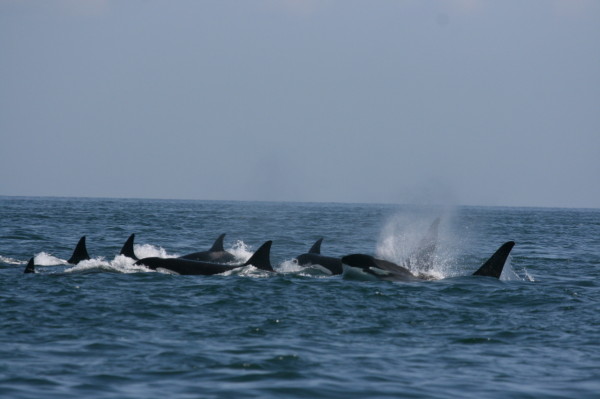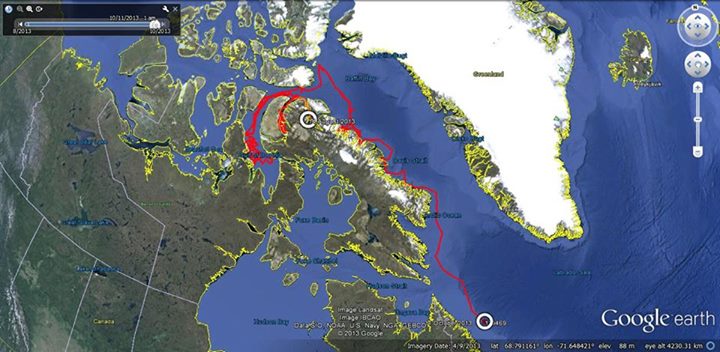Arctic killer whale movements update
Well, after a thrilling 2 months of tracking the pod of 14-20 killer whales tagged in early August, west of Pond Inlet, Nunavut, it seems like the last of the 5 satellite transmitter tags may have either fallen off or malfunctioned. Such things happen in the world of conservation science! October 11th was the last registered location, east of Nain, Labrador, as the pod ploughed southwards, and fast.
Although we may not know where this pod spend their winter (a few years ago a tag did stay transmitting until November, by which time the pod was off the Azores in the east Atlantic), we did learn an awful lot of important things about where this top marine predator hangs out during the summer in Canada’s arctic waters – and this is very important to WWF in pressing for strong environmental protection plans that safeguard such key areas for marine wildlife, in the face of rapid climatic and industrial changes.
By my quick reckoning, these killer whales travelled at least 4,000 km in Canada’s eastern Arctic during the 8 weeks that the transmitters were working. The pod frequented many areas known to support significant summer concentrations of other marine mammals such as narwhal, beluga and bowhead whales, walrus and various seabird species. I suspect that the pod got a big pulse of much-needed energy from their feeding here, and that will have fuelled them on their long journey southwards now. This pod certainly moved out in good time into the deeper waters, unlike the killer whales that got stuck in the winter sea-ice in eastern Hudson Bay last year.
But as these arctic waters steadily become free of sea ice for longer and longer each summer, it is almost inevitable that more killer whales will be seen – effectively replacing polar bears as the top predator in parts of these large northern marine systems. WWF’s aims are to have smart, well-informed marine plans in place to allow nature to cope as best it can with these changes, and stay resilient in the long term. And of course we will continue to push our global economy towards a renewable energy base by 2050, mitigating the adverse consequences of rapid climatic change.



